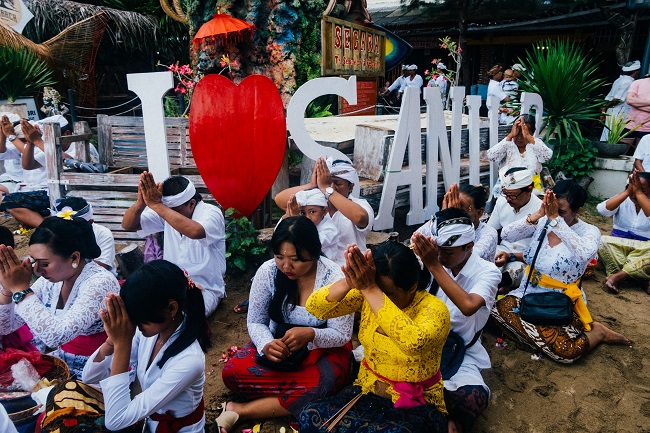Years of being an environmental activist has trained Suzy Hutomo to look at what is often unseen; what governments and many powerful corporations do not want you to see
Suzy Hutomo
I grew up a nature lover. My family and I spent our leisure time out in the ocean, visiting islands off Jakarta’s coast or fishing, sometimes even in the southern seas near Pelabuhan Ratu, where the waves are really high. We loved the ocean. As both of my parents are from the port city of Makassar, stories about beaches, fishermen, and seafood are a part of my childhood memories. My mother would tell us about her youth in Makassar and how all the seafood they ate was bought from local fishermen who brought in with fresh catch daily. Those were the days when you understood where your fish came from and knew the name of the fisherman who caught it.
The ocean was an intimate part of our lives. It was not just a place to visit and spend leisure time, but, in the truest sense, a gift; a gift from mother nature.
After decades of living in Jakarta, my husband and I felt exhausted by the noise, pollution and the stress. In 2011 we moved to Sanur, Bali, seeking a calmer life where we could be more present with ourselves, our children, and connect more closely to nature.
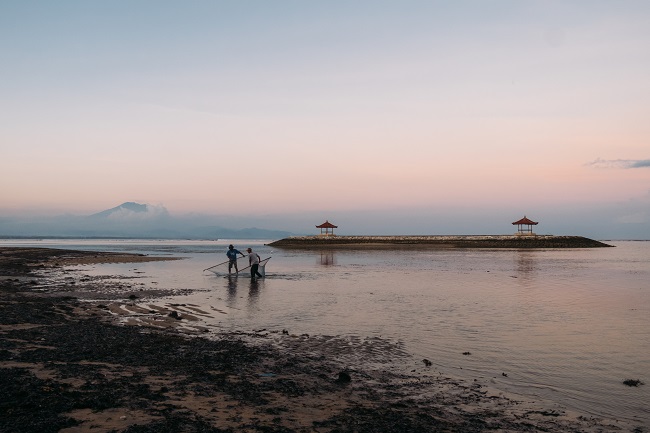
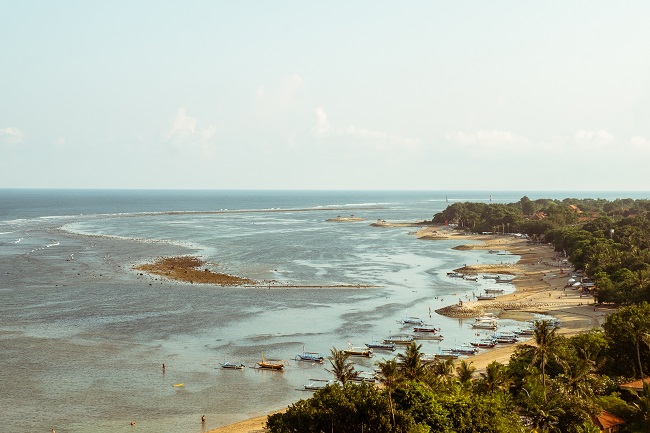
The Sanur beach lies on the east coast of Bali. In the early 1960s, a project began – with international aid from Japan – to protect this stretch of beach from coastal erosion. If you walk along the shore, you will see the barriers that resulted from this project. Some of the barriers stretch outwards, perpendicular to the shore, to protect from longshore currents, and others are parallel to the shoreline, built to break the waves.
Sanur is a slow area compared to other parts of Bali. People who live and visit Sanur seldom seem to be in a hurry. They are not overly loud, pushy or garrulous. Sanur has a slow resort culture and sees the same set of generally older tourists arrive each year, mostly pensioners and small families from Europe. The beach-facing restaurants that line the length of the beach are mostly quaint.
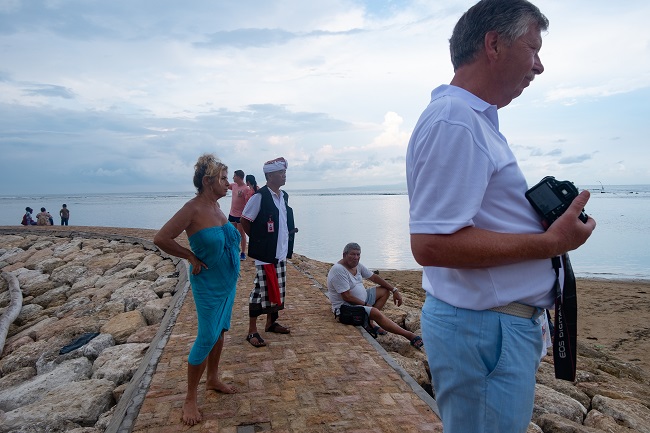
The length of the Sanur beach stretches roughly eight kilometres, and the beach holds special significance for the Balinese, not just for the tourists. It is a special place of worship for the Hindu Balinese and a place for workers to relax at the end of their day, or for families to enjoy over the weekend. As Sanur is only ten minutes away from the city of Denpasar, many people who live around the area come in the early morning to experience the sunrise or in the early evenings to swim and relax.
All the beaches in Bali are open for access to all residents, and this is protected by law. In many other cities, the beaches are mostly privatised and not easily accessible. I treasure Sanur and Bali because it welcomes everyone. On the beach and before Mother Nature, we are all equal. Whether you are rich or poor, Balinese or Javanese, a resident or tourist, you can walk on the sand, swim in the cool ocean water, or witness and live the sunrise.
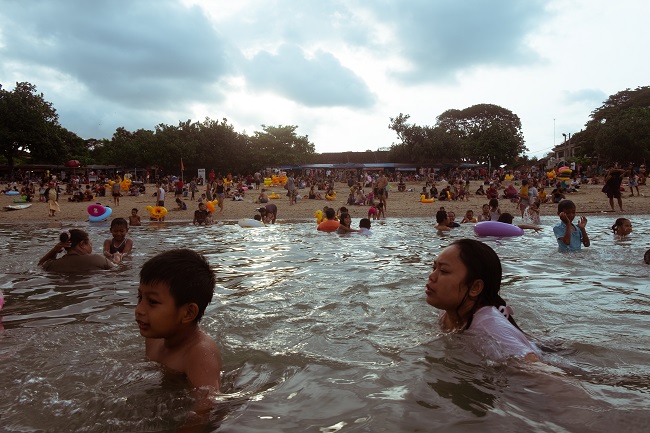
The water at my feet
As a resident living a few minutes away from the beach I can often visit during the quieter hours of the early afternoon, when the sun is at its highest. If I’m walking with my husband, my children, or the dogs, we usually stay on the path. I prefer, however, to walk at the edge of the water because it allows me to discover the ocean.
With the water lapping at my feet, I am in awe of the shimmering surface of the sea in the afternoon sun. I notice the highest tidal line on the sand and become more aware of the tide’s rhythm. Listening to the rhythm of the ocean waves calms my mind, as though it were in its natural state. I’ve found that if we listen to the ocean’s breath, it can be as restorative and peaceful as meditating to our own breathing.
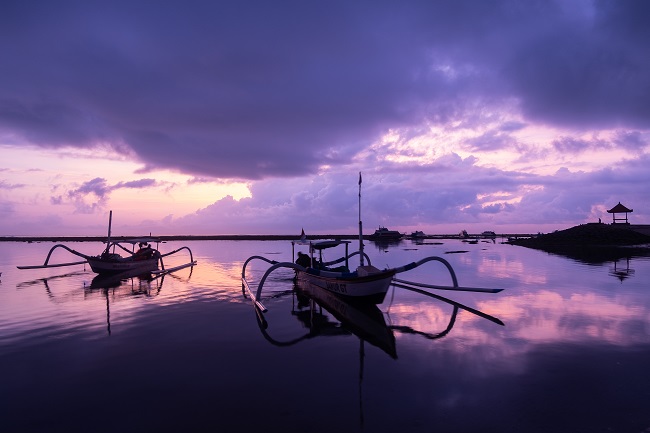
During low tide I like to look at the rock pools. There are a great many seaweeds, and Sanur has a variety of them that grow in its part of the ocean. If you look closely, you will see little fish swimming among the seaweed. For smaller fish, seaweed – just like corals – are their homes, providing shelter and protection from predators and strong currents.
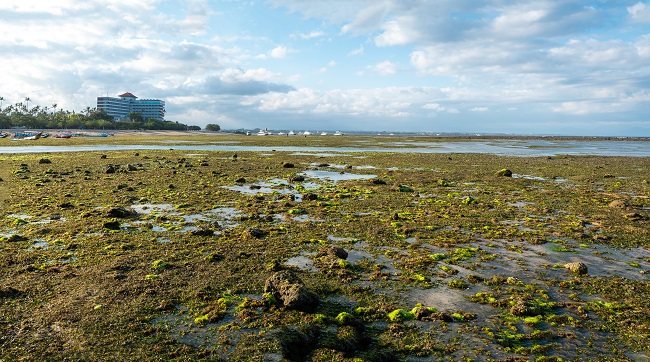
There are corals in Sanur too, but they are mostly dead due to intense human activity. These coral skeletons are grown over with algal turf, so their appearance is green and mouldy. Further out from the shore – say, half a kilometre – there are some live colourful corals, which the smaller fish rely upon as protection to grow bigger. During the low tides, you can see the fishermen with their poles and lines.
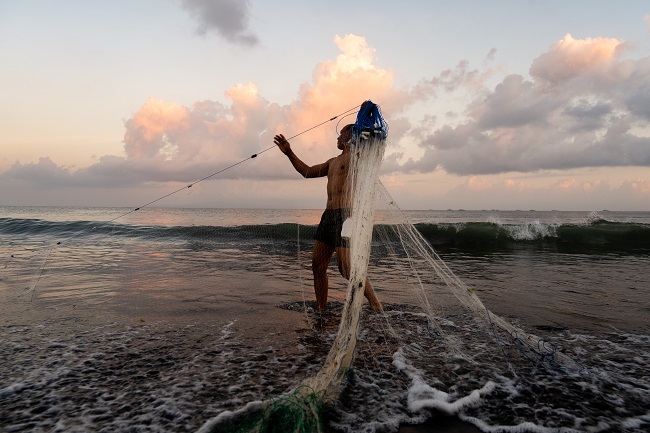
The highest tidal line on the beach also reveals what is in the ocean that shouldn’t be there. Sadly, the seaweed and the seashells are always riddled with plastic waste. It has been forecast that by 2050, the ocean will house more plastic than fish. Like a cough that reveals a body battling a malignant disease, the plastic on the shore reveals an underlying illness of the ocean. It is battling, and dying, from the disease, which humans have caused. Plastic pollution – just one of the many ways we are abusing the sea – is killing the fish, ending up in the nostrils of turtles and stuffing the stomachs of whales and fish.
I can’t stop myself from picking up the waste I find, even though it’s endless. Sometimes, my heart is angry. If we keep doing this, what will be the fate of future generations? The thought that people can be so unaware and indifferent made me so upset that for a time, I stopped going to the beach altogether. But I realised that my anger and distress does not help our situation. They are not the seeds of hope.
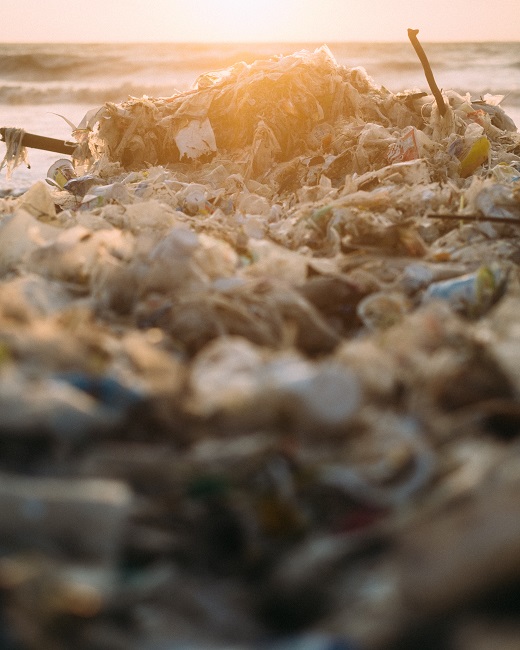
I have decided instead to transform my energy of anger into compassion. People do this because they are unaware, and I want to share what I see, feel and think to help others become more aware of the consequences of our lifestyles and habits towards nature.
The seen and the unseen
You will have no trouble finding a book on Bali in the airport or any local bookstore filled with gorgeous pictures. Bali depicted as an idyllic and perfect paradise is the Bali we all know. It is the Bali that makes it onto every tourist website and television programme. The unseen of Bali is the plastic waste beneath the ocean’s surface and buried under the sand on the beaches. It is the landfills at maximum capacity which poison the surrounding communities with unbearable stench and, in some cases, leaks into the ocean.
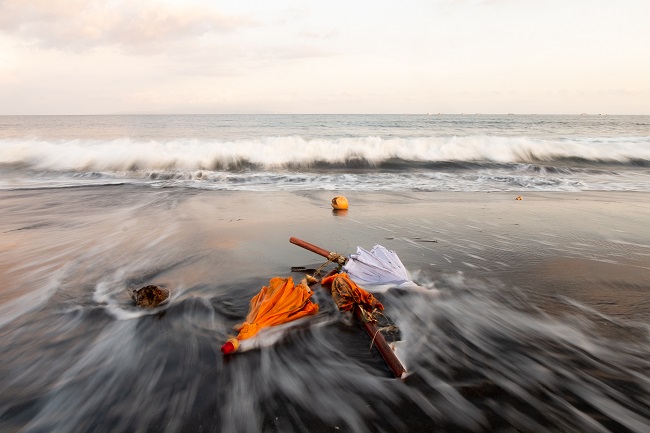
Years of being an environmental activist has trained me to see what is often unseen; what governments and many powerful corporations do not want us to see. Every January, the ocean currents bring to the west coast of Bali an unspeakable amount of plastic waste. Every year, these pictures that bear witness to the consequences of our throwaway lifestyle and unconscious habits of consumption that make headlines across the internet. For a moment in cyberspace, what is often unseen makes its way into the collective consciousness.
A few years ago, a sperm whale washed up on the beaches of Wakatobi in South Sulawesi, making international headlines. This whale had died from ingesting six kilograms of waste that people had thrown into the ocean. They found in its stomach plastic cups, bags, bottles and flip-flops. This whale was one of many millions of aquatic animals, that do not make it into our news. Their suffering is the unseen consequences of our consumptive lifestyle and throwaway economy.
We must continue to recognise and appreciate the beauty of Bali. More importantly, we must recognise and appreciate the degree to which the way we live our lives is contributing to its suffering. If we don’t, then our grandchildren may become the last generation to witness Bali’s beauty.
Anthropause
When the COVID-19 pandemic struck, the beaches were closed by the local adat (traditional) police of Bali. Tourism came grinding to a halt, and with it, the Balinese economy. Many Balinese returned to their villages to farm, and those in Sanur returned to fishing to support themselves.
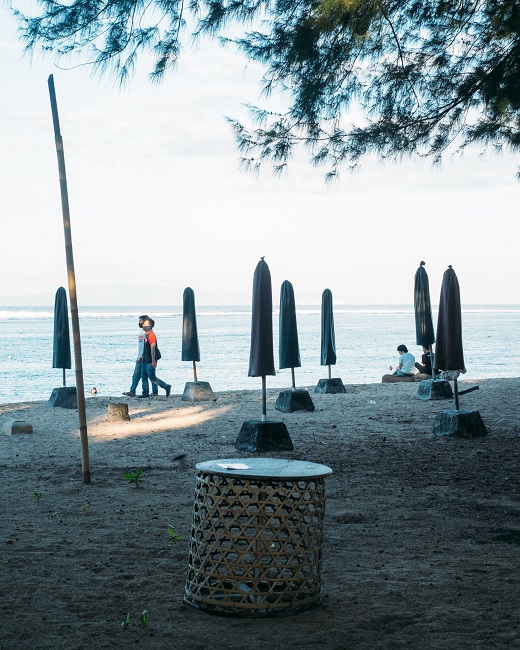
As I walked on the beach, I saw rows of wooden loungers on the beach stripped of their cushions, their parasol umbrellas firmly folded. Where once there was a vibrant stretch of restaurants and shops, empty wooden chairs were stacked on top of one another, unoccupied. It was devastating to see the surface of the economic hardships that the people of Bali were facing – which persists to this day, since tourism has yet to recover.
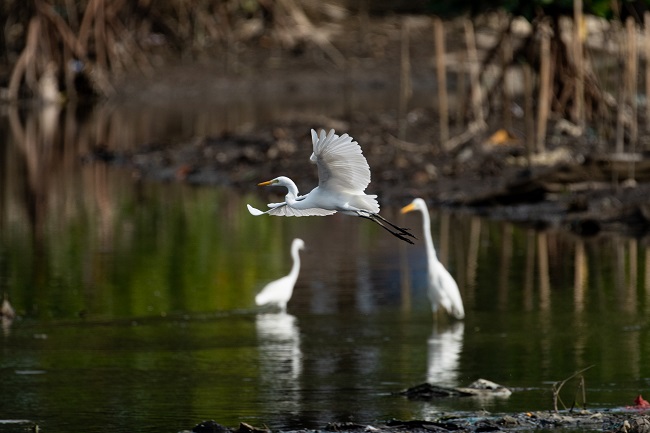
However, during our plight, nature in Bali and around the world experienced a different story. With anthropause – the temporary cessation of human activity – the wildlife returned. Birds that are not usually seen began to appear: egrets, water hens and many others especially in the mangrove forest at the end of Sanur beach. Here, the birds gathered in large flocks, undisturbed by human activity.
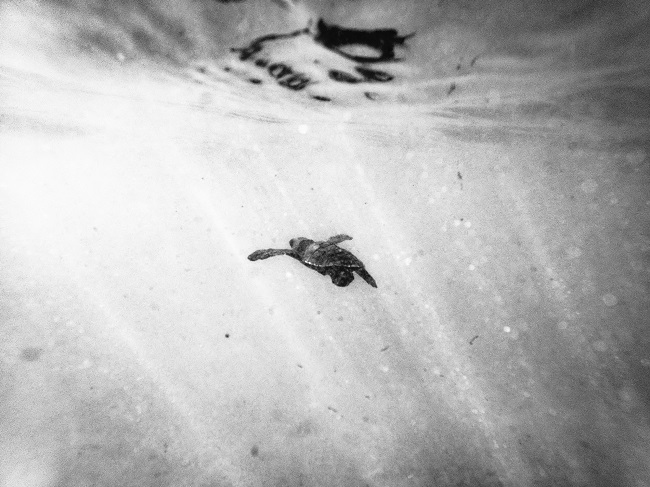
Turtles hatched in the safety of the empty beach. The wildlife roamed freely and went about its life. Almost instantaneously, nature filled the vacuum we had left. But the consequences of our lifestyles and throwaway economy persisted; birds pecked at plastic waste we left behind.
Hope
Seeing the biodiversity return was amazing. Nature has blossomed during the lockdowns. Amid the disastrous storm that has devastated the human world is a seed of hope. Nature can indeed bring life back and reverse the damage we have caused. Now, it is up to us whether to help or hinder this hope. We still don’t truly understand that the hastily discarded water bottle we bought to quench our thirst for a moment will remain on the beach or in the ocean for 500 years – long after we are gone.
Today, we see more fish in the sea and birds in the trees. It is the time for us to think about how we want to emerge from this historic event. If we continue as before with our habits of consumption, then the plastic waste will continue to pollute our oceans until it exceeds the population of fish in the sea.
We can save the planet and the millions of species of animals that inhabit it by carefully managing our impact through changes in our consumptive habits and lifestyles.
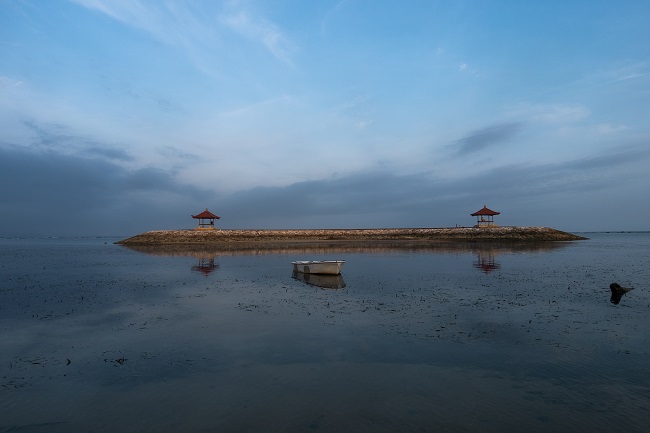
We can all have that impact through living more sustainable lives. By using reusable bags, bottles, and refusing single-use plastic, you are already setting a positive example to your children and friends and reducing your impact on the planet.
If we play our part, nature can heal. We are never too small to make a difference. Anita Roddick, the founder of The Body Shop, used to say that if you think you are too small to make a difference, try sleeping with a mosquito. We must awaken in ourselves the awareness deep inside our souls so that we may become the change we wish to see in the world.
Suzy Hutomo is the co-owner and chairperson of The Body Shop Indonesia. She also the founder of Sustainable Suzy, a sustainable lifestyle channel at www.sustainablesuzy.com. She would like to acknowledge the assistance of Leo Santoso in preparing this article. Photographs are by Sofyan Syamsul.
Related articles from the II archive
Coral reef conservation and the communities leading the way
Wayang helps save the reef
The waste emergency
